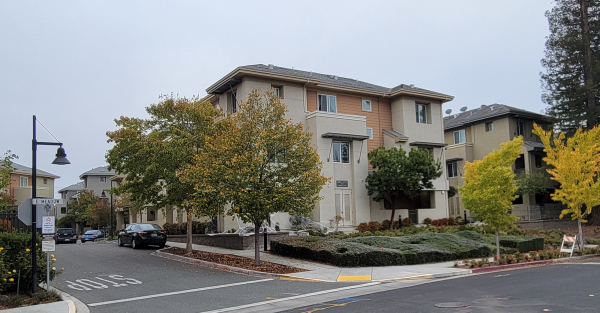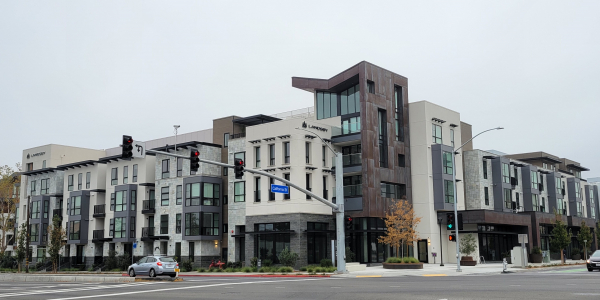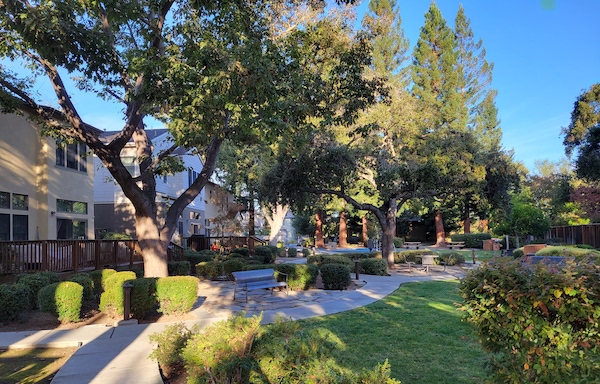I got an email recently from a resident expressing concern about the environmental impacts of building more housing. He writes: “The construction of thousands of new housing units takes enormous resources: cement, lumber, sheetrock, glass, tiles, roofing materials, etc., and each unit will have to be equipped with domestic essentials, so we need 6,000 stoves, ovens, fridges, dishwashers, toilets, washing machines, dryers and so on. The construction of these new buildings imposes a demand on the planet's resources and calls for the consumption of a great deal of energy -- with a commensurate emission of greenhouse gases.”
You might not agree that dishwashers and washer/dryers are “domestic essentials” needed in every home, but technically he’s right about emissions and resources. Some housing may be more environmentally friendly than others, but it’s still going to use more resources than building no housing.
It also seems obvious that developing what would otherwise be green space -- a yard, a lot, a park -- is not great for the natural environment. That is probably what the “Woodside is a mountain lion habitat” campaigners were thinking when they pushed back against the state’s housing requirements, and they are probably right that if many of their large rural lots were fully developed, a mountain lion or two would be impacted.
But agriculture is also bad for the environment and no one is saying we should stop planting crops. People need food and people need housing. So what is behind these arguments that housing is bad for the environment, and to what extent is the housing debate an environmental debate?
My guess is that at least part of it is that the person who wrote this email, along with the Woodside residents and, well, most people I know, loves and appreciates nature. We vacation in beautiful places and visit parks and open space on the weekends. If we are sick, we can go to a local hospital that prioritizes nature because of its beneficial impacts on health. It’s not just that we enjoy nature -- it is good for us. Some people will forgo a larger home and opt to live in a van or a tiny home in order to be more immersed in the environment. The natural world benefits each of us, and we feel that, so people may be concerned that increased density could disrupt the environmental serenity we enjoy here.

A multi-family development in Palo Alto
But that’s a quality of life argument, not an environmental one. While it’s true that development and people and lights and noise and human activity disturb ecosystems, the impact is even worse when homes and businesses are spaced apart. From an environmental perspective, you want people to live close to each other and the services we use, and leave the rest of the land undisturbed. (1) People in urban areas use less energy, consume less stuff, and have a smaller environmental footprint. So where we need housing, the environment prefers it to be dense and walkable, especially when that is coupled with the expansion and preservation of open space and wilderness. There’s a good environmental argument that all new housing should be multi-story, multi-family, and walkable.
You could further argue that housing built in our area is especially eco-friendly. California has efficient building codes, relatively clean electricity, and a temperate environment. Building dense housing in California, especially if it’s populated by people moving from less temperate areas or areas with worse building codes and/or dirtier electricity is arguably a net win for the environment. So if the natural world had a vote, it would probably reject the spacious Woodside lots in favor of unpopulated open space and a denser downtown with multi-family homes for even more people.
In other words, housing may technically be bad for the environment, but people need housing, and the best kind of housing for the environment is dense and walkable. We could build only that, but not everyone wants to live in that kind of housing. Famously in 2016, a passionate advocate for denser housing in Palo Alto moved her family to a 2,700-square-foot 4BR single-family home with a two-car garage in Santa Cruz. Density and/or environmental considerations were not top of mind when she was choosing for her own family where to live, and the same holds true for many people. Workers commute to the Bay Area from Tracy because they prefer the housing there. What is good or not for the environment has little relevance in these decisions.

A multi-family development in Mountain View
So, I think any “housing-is-bad-for-the-environment” arguments are specious and a distraction from the real issues. The housing debate is about affordability. It is about equity. It is about quality of life. And it is about balancing those objectives. If there is a meaningful environmental angle to the housing debate, then I think it is just that people place a high value on access to the natural environment but it is getting increasingly expensive to create and maintain. Palo Alto has long been able to prioritize park space, a healthy canopy, spacious schools, and access to wilderness for its residents. Many beautiful multi-family residences were built with green space and gardens. Residents have stepped up with their time and their wallets to kick off and support valued initiatives including Foothills Park, the Baylands, Canopy, and the Gamble Garden Center. Going forward, how much can and should we continue to prioritize park space and green space as we add new residents, given the exorbitant costs of land and construction, with developers claiming they need 30 or even 40 homes per acre just to break even?
What do you think about the degree to which our local governments will need to balance adding more housing with access to and integrity of the natural environment? For example, should all new residences be multi-story, multi-family, 40 homes per acre, with relatively small amounts of green space, to reduce our footprint and improve affordability? Or should we have more open space in and near these new residences, and at what cost?

A multi-family development in Palo Alto
Notes and References
1. There are limits to this. Dense urban areas need to be able to process their waste and source their energy and water in an environmentally-friendly way. It’s possible for an area to be too dense.
2. One piece of good news for Palo Alto is that there are plenty of sites for new multi-family housing that do not involve building on green space. But how much green space should those sites have for the new residents, and how much should the city expand its park and school space?
Current Climate Data (September 2022)
Global impacts, US impacts, CO2 metric, Climate dashboard
Comment Guidelines
I hope that your contributions will be an important part of this blog. To keep the discussion productive, please adhere to these guidelines or your comment may be edited or removed.
- Avoid disrespectful, disparaging, snide, angry, or ad hominem comments.
- Stay fact-based and refer to reputable sources.
- Stay on topic.
- In general, maintain this as a welcoming space for all readers.



